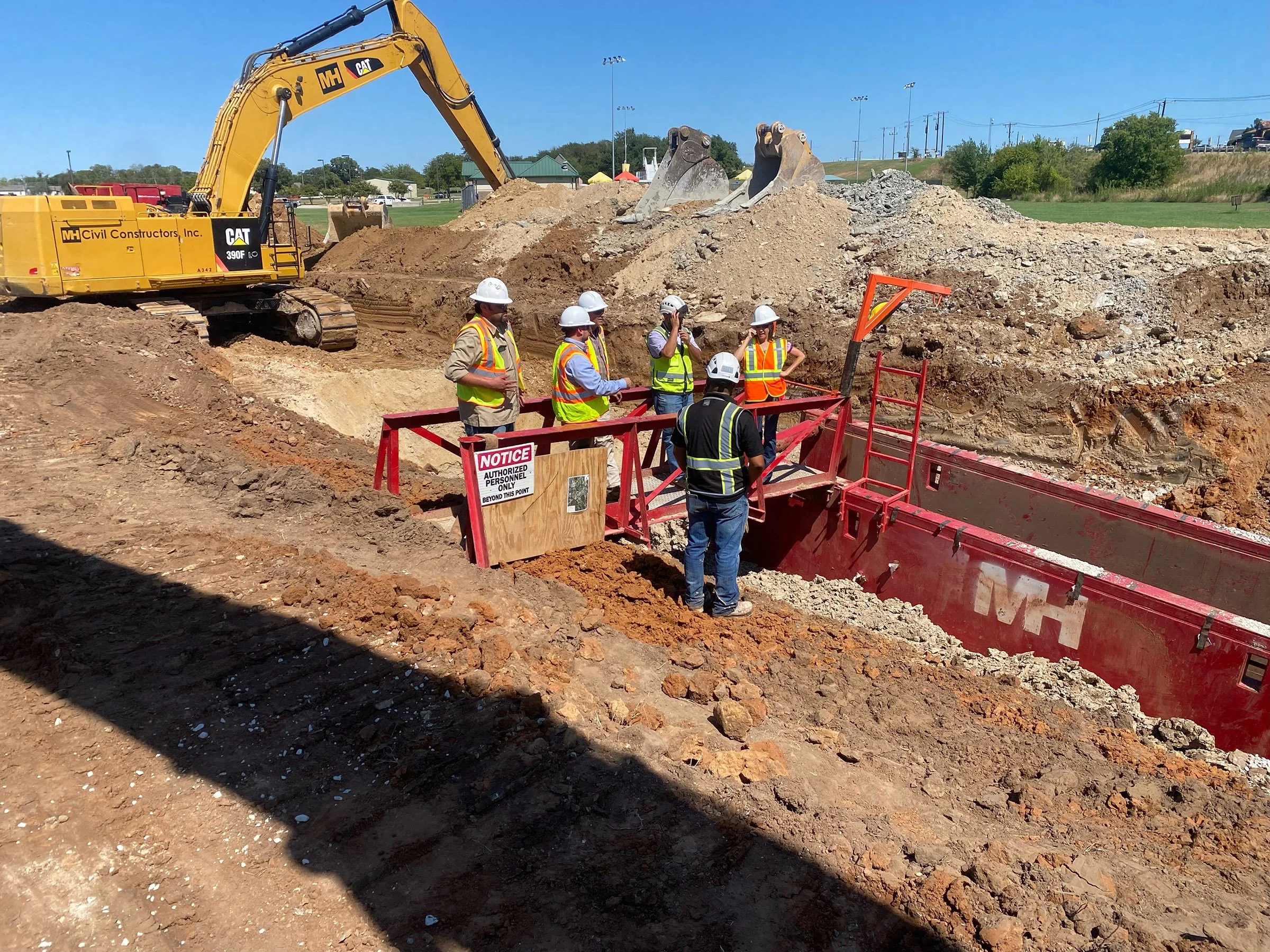Stephenville Eastside Sewer Interceptor improvements
A Case Study in Infrastructure Renewal
1. Problem Statement: interceptor capacity
As the City of Stephenville expanded, so did the burden on its aging wastewater infrastructure. The existing interceptor system, once sufficient, could no longer support the increased flow demands driven by new development. Peak flow periods brought the looming threat of overflows, posing environmental and public health concerns. Simultaneously, decades-old pipelines were becoming increasingly unreliable, requiring frequent repairs and patchwork fixes. The city’s engineering leadership—alongside regulatory stakeholders—recognized the urgent need for a long-term solution. Their goal was clear: modernize the system to meet future demand, enhance environmental compliance, and ensure service reliability for years to come.
2. Solutions
Our team collaborated with city engineers on a robust solution for the Eastside Sewer Interceptor Phase I project. The plan was ambitious in scope and critical in importance. MH Civil Constructors replaced the deteriorating infrastructure with over 16,200 linear feet of large-diameter fiberglass reinforced pipe (FRP), including 30-inch, 36-inch, and 48-inch sizes. The choice of FRP was strategic—its corrosion resistance and structural strength promised decades of reliability with minimal maintenance.
Execution began with extensive trenching, some reaching depths of 60 feet. In high-traffic or environmentally sensitive zones, we employed trenchless methods, including boring and jacking operations, to minimize surface disruption. Steel casing installations ranging from 48 to 60 inches allowed for safe and secure pipe placement beneath roads and other obstacles.
We also constructed 41 FRP manholes, each designed for long-term performance under fluctuating load conditions. Where work impacted community spaces, such as park trails, we ensured full restoration, including trail reconstruction and hydromulching for erosion control. Through it all, careful planning, safety coordination, and close communication with city stakeholders kept the project on schedule and within scope.
3. Results
The completion of the interceptor marked a turning point in Stephenville’s wastewater management. The upgraded system now accommodates significantly higher flow volumes—improving capacity by an estimated 40%—and provides a much-needed buffer for future growth. More importantly, it eliminates the chronic risk of overflows that once threatened compliance with state wastewater regulations.
System reliability has also seen a major leap forward. By replacing aging infrastructure with durable FRP materials, the city extended the operational lifespan of its sewer system by an estimated 50 years, dramatically reducing future maintenance burdens.
Financially, the project was a textbook example of effective budget control. With a total contract value of $21.96 million, change orders accounted for less than 1% of the original estimate—a testament to the accuracy of preconstruction planning and the discipline of the project team.
Along the way, we reaffirmed some vital lessons. Deep trenching in urban areas requires not only technical precision but constant stakeholder engagement to mitigate disruptions. And when it comes to infrastructure upgrades, investing in premium materials like FRP can deliver long-term value that far outweighs the upfront cost.
The City of Stephenville now has a resilient, future-ready interceptor system—and a strong foundation for continued growth. For our team, it was a project defined not just by concrete and pipe, but by strategic execution and engineering excellence.




